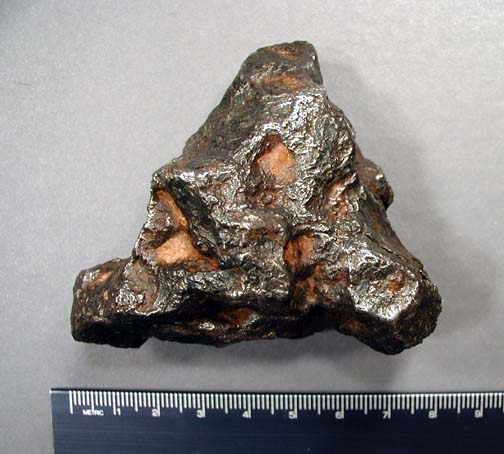
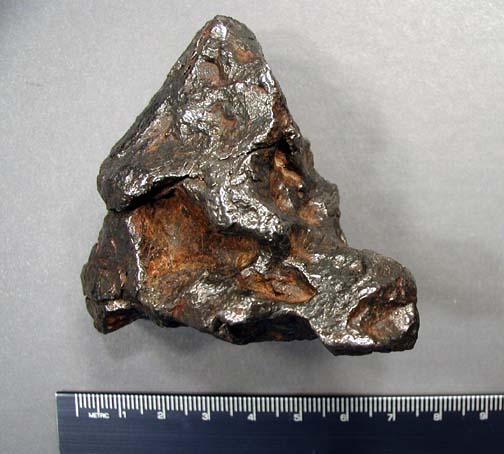
Origin: Coconino County, ArizonaThis specimen comes from one of the most well known meteorites in the United States. Its impact created the Barringer Meteorite Crater near Winslow, Arizona.
Time of Fall: Between 20,000 and 40,000 years ago (discovered 1891)
Variety: IA coarse octahedrite
Contains: Lots of iron, 7 to 15 percent nickel Specimen: 317 g
Total weight: 10,000+ kg
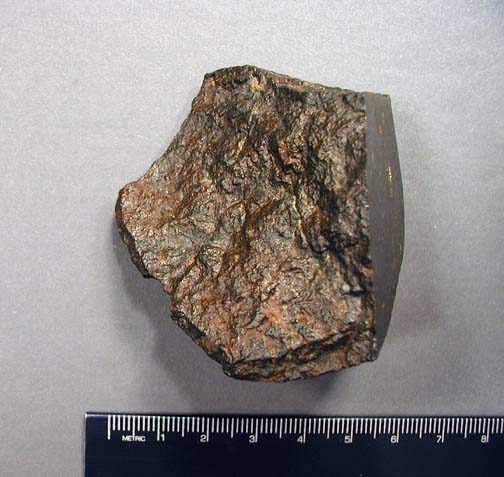
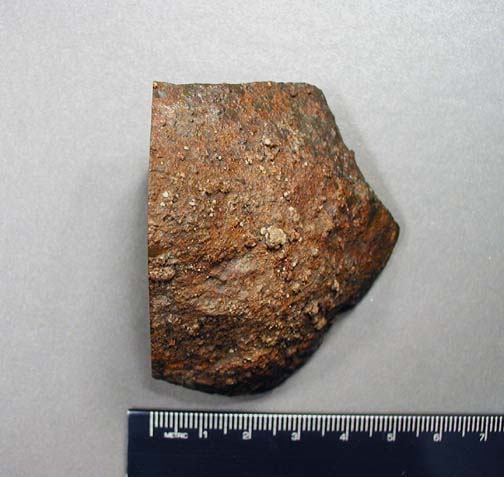
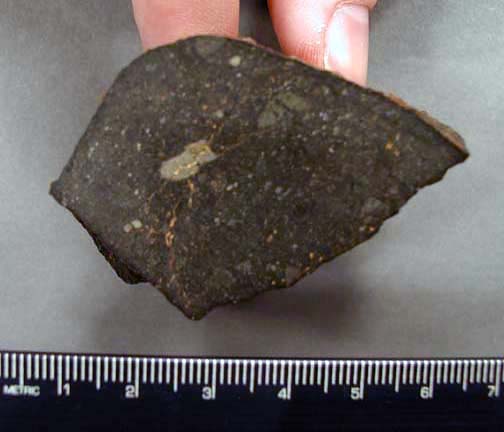
Origin: OmanThis meteorite fell in the Jiddat al Harasis region of Oman (near Ghubara) in 1954. Since then, over 100 kg of specimens have been recovered. Ghubara is an olivene-hypersthene-chondrite black xenolithic L5. Ghubara contains quite a bit of metal; it is 21.33% iron.
Time of Fall: Unknown (discovered 1954)
Variety: Chondrite
Contains: Olivine, pyroxene (hypersthene), 21.33 percent iron
Specimen: 110 g
Total weight: 100+ kg
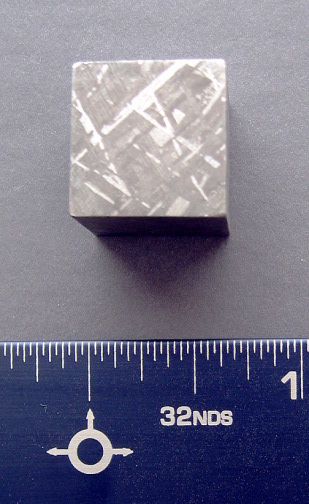
Origin: NamibiaThis meteorite fell in Namibia in prehistoric times, and is named after the town nearest to the fall site. This specimen has been cut into a cube, polished, and treated with acid to expose a Widmanstätten pattern which shows the long iron-nickel crystals. This interesting structure was formed as the metal slowly cooled, thus allowing the nickel to separate into interleaving bands. The acid then etches the bands of kamacite more aggressively than the bands of taenite, thus highlighting the bands, or lamallae.)
Time of Fall: Unknown (discovered 1836)
Variety: Fine Octahedrite
Contains: Iron-nickel alloy, along with cobalt and phosphorous-
Specimen: 36.16 g
Total weight: 26 metric tons
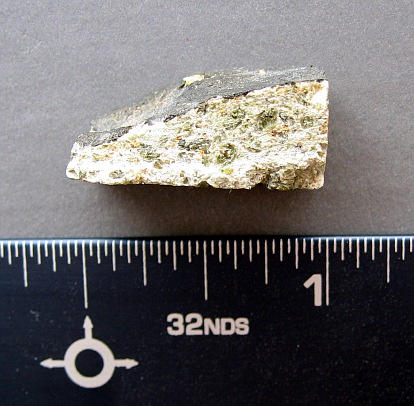
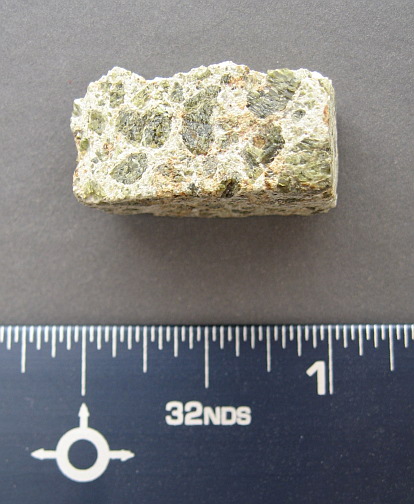
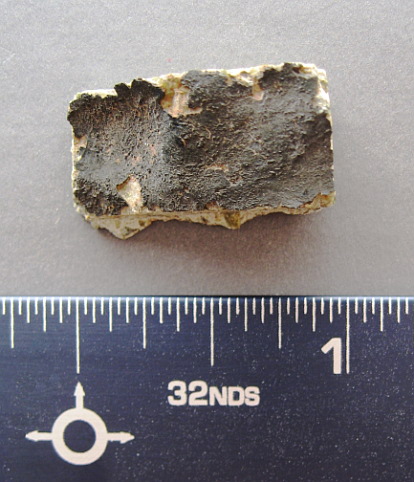
Origin: Northern Colorado, USAThe Johnstown meteorite is a member of a rare group of meteorites called Diogenites after the philosopher Diogenes, who was the first to suggest meteorites originated in space. Note the black fusion crust, along with the large, green hypersthene crystals, believed to result from slow cooling within a magma chamber of the 4 Vesta asteroid, a large, differentiated asteroid. 4 Vesta is often called the "smallest terrestrial planet" because it has a core, mantle, and a crust, and is also the only asteroid regularly visible to the naked eye.
Time of Fall: July 6, 1924, at 4:30 PM
Age: 4.43 - 4.55 billion years Variety: Stony achondrite (Calcium-poor diogenite
Contains: Mostly hypersthene, with small amounts of plagioclase and olivine
Specimen: 6.6 g
Total weight: 40.3 kg
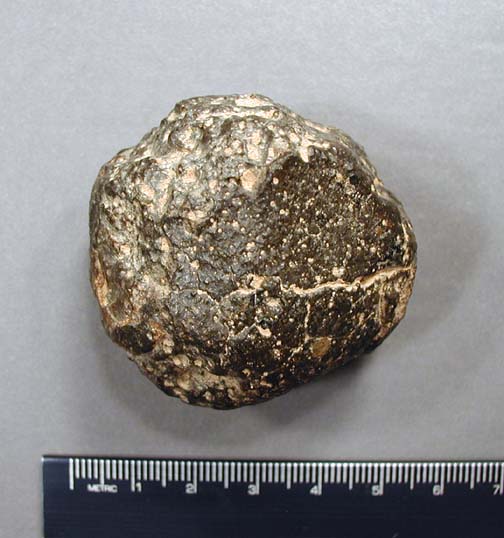
Origin: AlgeriaNWA is a temporary name given by the Meteoritical Society to meteorites found in North West Africa. NWA 869 was discovered in Algeria (near Tindouf) in 1999. NWA 869 remains one of the largest known meteorites to come out of North West Africa; nearly 3000 kg of specimens have been recovered so far.
Time of Fall: Unknown (discovered 1999)
Variety: Chondrite
Contains: Olivine, pyroxene (hypersthene) and 7 to 12 percent free metal
Specimen: 105 g
Total weight: 2,000+ kg
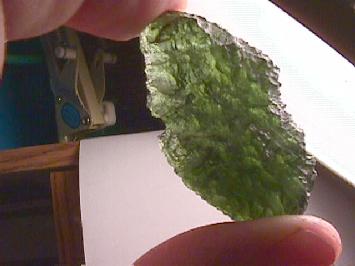
Origin: Czech RepublicMoldavite is a distinctly-colored tektite found in the region of the Czech Republic known as Moldavia. It is believed that the impact that "spawned" this tektite occurred in Germany. According to Vladimir Bouška's seminal work Moldavites: The Czech Tektites, Moldavites are more stable than terrestrial glass. Moldavites, like all tektites, contain far less alkali metals than common glass. As a result, Moldatives have a melting point between 1100 to 1600 degrees celsius. Moldavites are much drier than terrestrial glasses, containing at least a hundred times less water than volcanic glass and five to ten times less water than the glass formed during nuclear blasts.
Specimen: 13.6 grams. Specimen is unbroke/unchipped.
Age: 14.7 million years
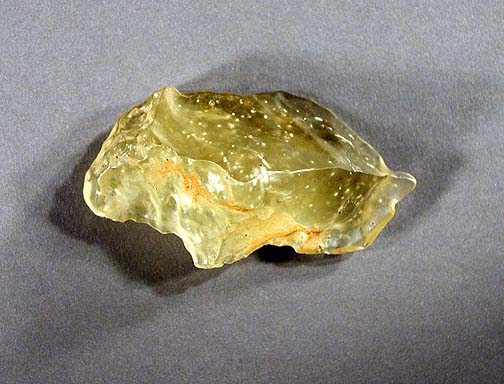
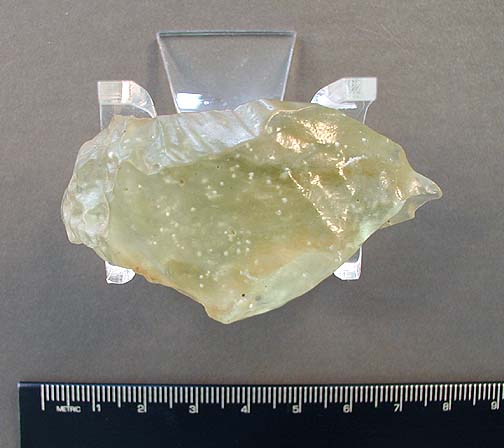
Origin: The Great Sand Sea, near the Gilf Kebir PlateauLibyan Desert Glass has been turning up in a 6500 square kilometer area of the Great Sand Sea since ancient times. It was apparently of great value; King Tut's burial breast plate featured a scarab carved from Libyan Desert Glass as its centerpiece!
Specimen: 33 grams
Age: ???
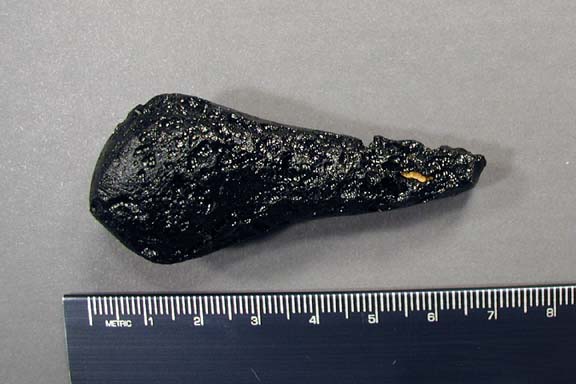
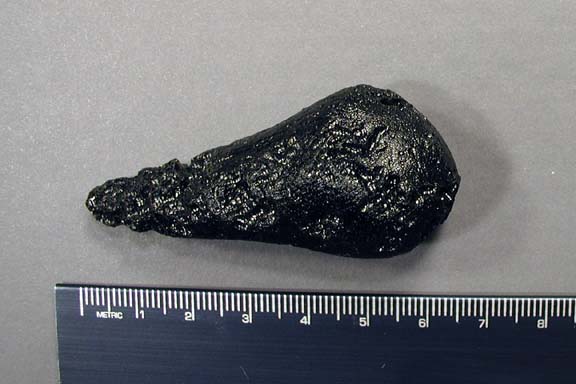
Origin: ChinaAccording to research done by Paul Liu, Indochinites were first documented during the Tang Dynasty (618-907 AD). The Chinese refer to them as Lei-gong-mo, or "Thunder God ink-black stones." While most Indochinites come from China and southeast Asia, it is now believed that Tibetanites are from the same impact as Indochinites, and are thus a class of Indochinites themselves.
Specimen: 26 g
Age: 700,000 years
The author of this page can be reached at webmaster-at-freeexistence.org. Replace "-at-" with "@" in the "To:" line.
This page is dedicated to Ludwig Fries: photographer, tektite afficianado, and also grandfather of the author!